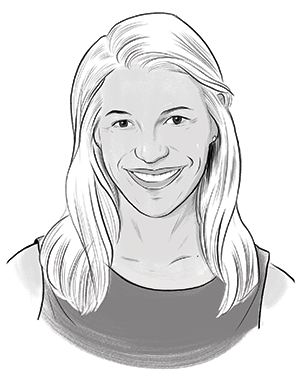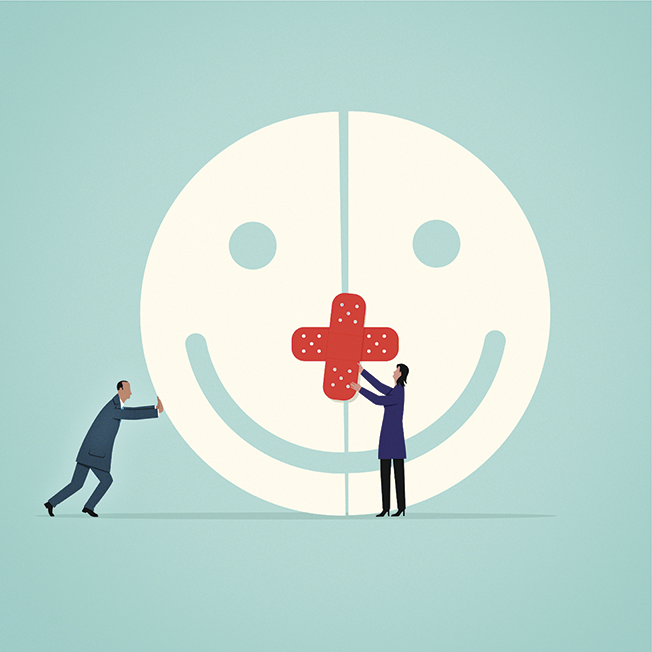Inspiration meets innovation at Brandweek, the ultimate marketing experience. Join industry luminaries, rising talent and strategic experts in Phoenix, Arizona this September 23–26 to assess challenges, develop solutions and create new pathways for growth. Register early to save.
Sewer inspector. Embalmer. Gastroenterologist. Tough jobs for sure. But try healthcare advertising for a week. Just try to be creative in an environment where important safety information takes up :35 of a :60 TV spot, where rules for short-form messaging run 15 pages long, where every print ad, website, banner and video must pass a rigorous risk mitigation assessment by a medical legal review team.

Amy Hansen
The threat of an FDA letter looms large in the lives of pharmaceutical brand managers, and that can lead to a condition known as FUD: fear, uncertainty and doubt. The resulting manifestation is "safe" advertising. You've seen it before: Happy patient stock photo paired with a headline about how such-and-such drug can help you get back to life! I've stared at blank walls that are more compelling.
So here's the thing: This highly regulated environment we live in is not a trend. It is a deeply instilled characteristic of the industry, and it is not going away. In the same way molecules are put through the R&D ringer, our ideas will continue to be scrutinized to ensure that they are viable. Sigh.
Suffice it to say that this can get old. It wears on you and tests your fortitude. Cynicism creeps in. The fire in our belly flickers.
So why do we do it?
Because we are in the company of Gandhi, Buddha, Dr. Seuss, Hippocrates and countless others who have recognized that health is the most precious asset a human being can have. Think about someone close to you who has had a health issue. What would you give to ease their aches, heal their hurt or find them a cure? If healthcare advertising can help connect patients with the care they need, we can alleviate a world of pain and suffering. That is the proverbial carrot that keeps us going when the going gets tough.
But we also need tangible carrots. Baby carrots. A daily source of vitamins C (curiosity), E (excitement) and O (optimism) to fuel us through the challenges. Here are a few of mine:
Let the future of medicine inspire you. My new go-to is bioelectronics, tiny disease-modifying devices that work sort of like a Nest temperature system. The field combines wireless miniaturization, material science, computer electronics, data science, neuroscience and electronic engineering to tap into a body's electrical impulses and teach the body to heal itself.
This is good news for the 117 million Americans who have a chronic illness. It's about 10 years away from reality, which isn't that long in pharma years. But the promise of being able to do some tasty, transformative creative has me learning all I can right now.
Build and sell a social strategy. It's not as crazy hard as it sounds. And clients really, really want it. They know the value of being part of the conversation. Unfortunately, conversations are where it all falls apart. Fair balance is so intrusive. And side effect chatter can trigger a whole course of events that nobody wants to deal with. But these are not walls. They are hurdles. We can help our clients clear them.
There are plenty of good examples of pharma-sponsored Twitter feeds, Facebook pages, YouTube channels and Pinterest pages to pull from. Start there. Know where the FDA stands. Know your client's social media policy. Have a plan for how to manage and facilitate engagements in a way that drives both compliance and traffic. Do all of that and you'll get something back: an opportunity to create a beautiful, fluid, dynamic conversation piece that truly connects with patients.
Create a digital solution the world won't want to live without. Medical apps were downloaded 160 million times last year. Good? Not really. Med tech experts interpret this data as major room for improvement in how we design digital experiences for patients and caregivers. There is a call to provide better simplification through customization and integration. Patients don't want all the information at once. They want the right information one click away when they need it.
Imagine, for instance, syncing a diabetic patient's health tracking app with his or her calendar, electronic medical records, wearables and medical monitors. Patterns would emerge that could prompt a response to a predicted event before it even happens. Patients are already working on this themselves. Take Dana Lewis. She hacked her glucose monitor with the sole intention of increasing the "beep" volume. By the time she was done, she had created a closed-loop artificial pancreas.
We can begin to hack the process by which solutions are created by listening, as well as understanding the pain points and the psychological principles at work that influence behavior change. In short, we need to do our homework before we do anything—then go out and create some kick-ass revolutionary solutions.
Yes, this industry can be tough on creatives. And we often talk about looking outside our industry for inspiration. But there's plenty within the industry that can excite us. Either way, find what works for you because the more creative energy we can collectively bring to the industry, the better it's going to get.
Amy Hansen (@hcb_austincd) is svp and creative director at HCB Health.
This story first appeared in the March 28 issue of Adweek magazine. Click here to subscribe.








